Traveling to Japan in 2024
After 12 years, I decided to return to Japan and I am wondering to myself, why I haven’t returned sooner. It’s been over a decade and I have forgotten that Japan is such a wonderful place to visit. I am biased because my favorite food is Japanese. Without further delay, I am sharing some helpful tips that should help make your trip better and stress-free.
Japan is one of the easiest places to travel to despite not speaking the local language. A lot of places and transportation hubs have English, Korean, and Chinese as language options.
First things first, I would like to cover logistics:
Flying into Tokyo:
From San Francisco to Tokyo you can either fly into Haneda or Narita. I chose to fly into Haneda because it’s a shorter train ride from Haneda to Downtown Tokyo ~ 30 mins vs Narita to Downtown in ~ 2 hr 29 mins. The flights to Haneda were slightly more expensive when I booked but it was not too expensive that I would choose to spend over an hour or more in transit.
Arriving at the Airport in Japan:
You essentially have to go through customs twice to get out. Once before you pick up your checked luggage and then again afterwards.
Before leaving be sure to get a Welcome Suica Card to make your travels within Japan easier. This welcome Suica card is only good for 28 days then it will expire. They do not offer the regular non-expiring Suica cards anymore. I do not know when this will change.
If you do not already have Japanese Yen on hand, you will need to withdraw cash from the atm which is conveniently located on the left of the machine where you buy the welcome Suica pass. I have a travel credit card that I use internationally, but this machine only takes Japanese credit/debit cards and I had to fall out of line to line up at the ATM just to line back up to the Suica machine, which added another hour. (the line gets long real fast).
This machine is located after baggage claim, there’s signs for it. You can also ask the information desk.
It’s not the end of the world if you don’t get the Welcome Suica card but it is a world of a difference if you are in Japan and plan to use their trains a whole lot. You save a lot of time by using this card instead of stopping by a ticket machine to buy a one time train ticket per ride.
Note on the Suica Cards:
If you have an Apple Iphone then you are in luck! You can download the app/use apple pay instead of buying a physical card. (I have an android so I am out of luck on that one).
You can replenish your physica Suica cards at any 7-eleven stores or train stations, but you can only use cash.
Each person needs their own card. It cannot be shared.
Use it up before you leave, because there is no refund for the money that is left in that card.
Shinkansen (bullet train) tickets are bought separately and they will give you a separate ticket for that. It will not be loaded into your Suica card.
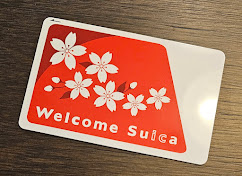
Note on JR rail pass:
Here is their official website: https://www.jrpass.com/
If you only plan to use the shinkansen for 1 round trip, you’re better off buying the tickets at the station for a one time round trip instead of purchasing the JR pass.
It’s only worth it if you have multiple itineraries where you will use the shinkansen. Some places can be reached without the shinkansen.
You can plan your trip then get an instant quote using their website.
I didn’t need the pass because I only used the shinkansen to and from Tokyo-Kyoto. It was cheaper to pay a one time round trip fare. The price doesn’t change whether you book it in advance or not. The only gamble is space. If you are traveling in peak season, you may ran out of “seats” if you leave it to last minute booking.
Transportation tips:
If you plan on using the train more than the taxis, then it is best to book your lodging really close, if not directly next, to the MAIN train station. The key word is MAIN. This cuts down on your train transfers and walking. There’s nothing wrong with walking but when you plan on walking all day to sightsee, sometimes you just don’t want to walk anymore by the time you are headed home. I ended up using their taxi in Kyoto. I normally just walk the extra 10 minutes from the main station to my lodging in Kyoto but it was pouring rain and the wind was super strong. Luckily it was a short drive and only cost $4.
You can download the Go app, which is Japan’s taxi app. They do not have Uber and this app mainly calls a taxi cab for you and acts like an uber app where you can pay in advance and see where your driver is located.
Tipping tips:
Tipping is not really a thing in Japan, but recently more and more places (especially the tourist areas) add service charge to your bill. We went to a well reviewed Japanese restaurant where we paid 15% on top of our bill, but it was also close to a tourist area.
Most places have a table charge during dinner which is mostly $2-3 per person and some bars can be $5-6 pp. They give you appetizers which are essentially paid for by this extra charge.
Etiquette tips:
It is not common to talk loudly in restaurants and public places. Unless you're in an Izakaya (which is Like a bar/tapas or small plates restaurant)
I noticed that in a lot of restaurants people usually do not hang around but rather go there to eat and leave.
It's not common to eat and drink while inside the train.
It's not common to eat and drink while walking.
Line Up. I like how orderly and organized they are. They are better at queuing than other countries.
Use the toilet properly (they Will have pictures in restrooms of Images how toilets should be used) I found this funny.
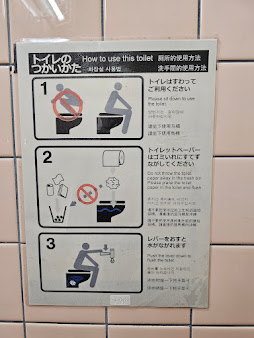
Other things to note:
Coffee Shops or Cafes that open at 6 or 7 am aren't common. If you wake up early and want your coffee early, your best bet is at a 7 eleven. But don't worry, their 7 eleven coffee is world's better than what we have at our 7 eleven stores here in the U.S.
I love coffee but I also only drink coffee when I wake up very early. So I was not able to try a lot of cafes as I do not drink caffeine by 11 am.
Trains are on time most of the time unless there's an accident. My shinkansen Ride back to Tokyo was actually delayed over an hour because a person and a train collided. Yes, that's how they described it on the notification board.
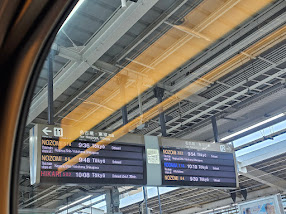
Shopping tax free is easy. Most stores will take care of your Tax refunds at the Store. Some will just sell you the items directly tax free. You just need to show them your passport. Some stores such as Montbell do not offer tax free shopping. Better to ask a sales person in advance before you start shopping.
Cash or Credit Card?
Surprisingly, a lot of places are cash only. You can definitely just peruse places that only take credit cards but you will miss out on a lot of delicious food including their street foods.
The cash budget really depends on the type of traveller. You may pay more by only choosing to eat at places that take credit cards. Vending machine noodle restaurants only take your Suica card which only reloads with cash. Some non-touristy restaurants and cafes are cash only. If you plan to eat a lot of wagyu and sushi per day then $30 - $50 per person per day. If you think you'll be dining in fancier places then being more, but most of the time they also take credit cards.
Here are examples of prices I paid:
Sushi (I ate sushi almost everyday. That was my most expensive meal.) Price ranged from $11 - $30.
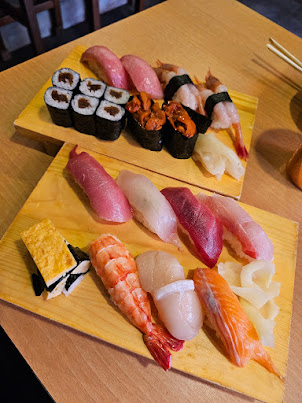
Except for this one which was $47 per person including beers. This is a pretty good price compared to eating sushi in San Francisco, but in Japan, I found so many cheaper Sushi places that are either just as good or even better. So no need to spend so much money on expensive sushi.

I found that some mall sushi places are pretty good and cheap.
Some conveyor belt sushi places like Sushiro are cheap but very delicious. We ate here more than once because it's convenient and they have a wide variety of Sushi and desserts to choose from.
Sushiro
スシロー 秋葉原駅前店
https://maps.app.goo.gl/yDYjn61e8qgxJzRX9


It's a pretty great deal.
If you want a cheaper price, eat sushi for lunch not dinner. A lot of places increase their prices during dinner.
My favorite place was
Yamashita
しぶ谷 やました
https://maps.app.goo.gl/CfxXgRseUgKxCr8u5
We went there for lunch and literally paid half the price you'd pay than if you go for dinner.
Sushi Chef Yamashita is so nice and friendly. I was able to practice Japanese while eating delicious sushi.
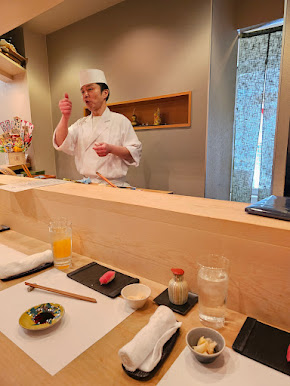
Ramen $3 - $8
This one is actually $6.53 or ¥980
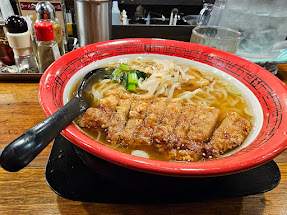
Onigiri from 7 eleven $1 - $2
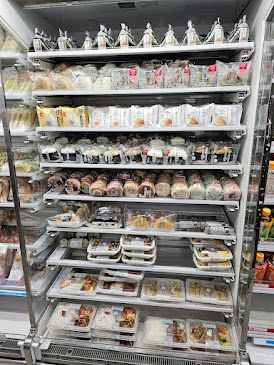
Wagyu - I'm not a big meat eater so I only had this once and I paid ¥3300 / $22. It was good to try, but I would rather have Sushi.
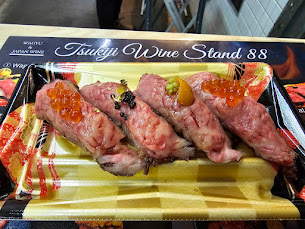
Street food - usually found outside of Shrines and temples - $1 - $4
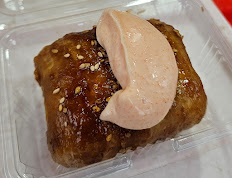
Meat wrapped in rice ball ¥600 / $4
7 eleven
everything there is cheap but good. They have a wide selection of cooked food (ramen, Udon, donburi, Sandwich, Onigiri, etc)
In the morning they have a lot of baked goods that thins out throughout the day.
Lots of dessert options
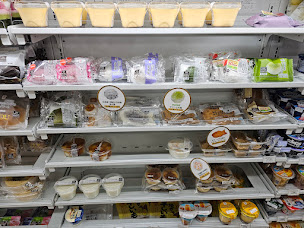
Don't forget to check out their grocery stores and supermarkets.
Things go on sale by the end of the day such as donburi and sushi and you can get some pretty good deals. This one was definitely worth it.
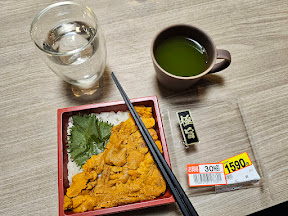
I also of course went to Tsukiji Fish Market
And ate sashimi there more than once. However, it was always busy and crowded with tourists and the prices were higher. I would be okay skipping it.
Tsukiji Outer Market
築地場外市場
https://maps.app.goo.gl/x1sh9vnQqaDGi74d8
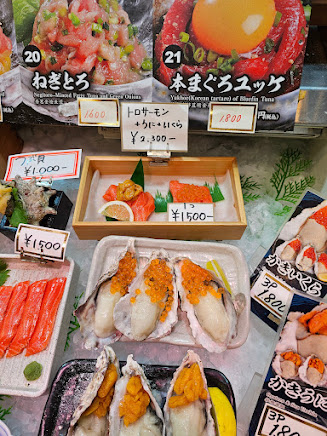
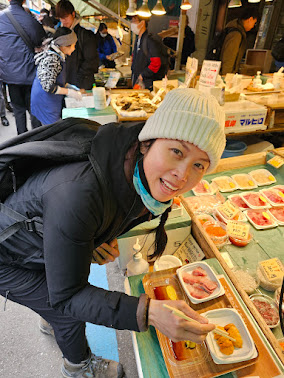
The currency exchange rate during my visit in February to March 2024:
$1 - ¥150
Over a decade ago on my previous visit:
$1 - ¥80
Weather in Feb/Mar:
The temperature ranged around 40 - mid 50 F and it rained from time to time. I don't mind this weather at all because there's less crowds and the cold is nice when you're walking all day. dress for the weather and it will be just fine. Dress in layers, wear waterproof hiking boots, and carry an umbrella.
Kyoto was definitely more touristy in general than Tokyo while I was there. Possibly because in Kyoto there are so many Shrines and Temples and the Gion District (Geisha district) is located there. However beginning April or May 2024 they are now closing Off the Geisha district to tourists. I stayed near Kyoto main station, a 10 minute walk. We were able to find restaurants closer to more residential areas that didn't have any tourists.
This one is pretty good
Uogashi Miyatake
魚河岸 宮武
https://maps.app.goo.gl/FUZhpofsFnQpMR1b9
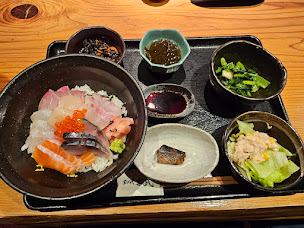
Tokyo is more modern with Lots of high rises that you have to Always remember to look up to see if your restaurant is on the 5th or 6th floor. The trains are plentiful and more frequent. I found less touristy areas in Tokyo maybe because there's Just more places to choose from. Tokyo is busier from a normal daily standpoint. But Kyoto is busy not from the locals but from tourists. There are definitely a lot of tourist hot spots in Tokyo but I didn't go to most of them.
Japan is definitely worth a visit if you have never been, but also worth coming back to. I will visit other parts of Japan next time around. I hope this helps you plan your trip better.
Japan is one of the easiest places to travel to despite not speaking the local language. A lot of places and transportation hubs have English, Korean, and Chinese as language options.
First things first, I would like to cover logistics:
Flying into Tokyo:
From San Francisco to Tokyo you can either fly into Haneda or Narita. I chose to fly into Haneda because it’s a shorter train ride from Haneda to Downtown Tokyo ~ 30 mins vs Narita to Downtown in ~ 2 hr 29 mins. The flights to Haneda were slightly more expensive when I booked but it was not too expensive that I would choose to spend over an hour or more in transit.
Arriving at the Airport in Japan:
You essentially have to go through customs twice to get out. Once before you pick up your checked luggage and then again afterwards.
Before leaving be sure to get a Welcome Suica Card to make your travels within Japan easier. This welcome Suica card is only good for 28 days then it will expire. They do not offer the regular non-expiring Suica cards anymore. I do not know when this will change.
If you do not already have Japanese Yen on hand, you will need to withdraw cash from the atm which is conveniently located on the left of the machine where you buy the welcome Suica pass. I have a travel credit card that I use internationally, but this machine only takes Japanese credit/debit cards and I had to fall out of line to line up at the ATM just to line back up to the Suica machine, which added another hour. (the line gets long real fast).
This machine is located after baggage claim, there’s signs for it. You can also ask the information desk.
It’s not the end of the world if you don’t get the Welcome Suica card but it is a world of a difference if you are in Japan and plan to use their trains a whole lot. You save a lot of time by using this card instead of stopping by a ticket machine to buy a one time train ticket per ride.
Note on the Suica Cards:
If you have an Apple Iphone then you are in luck! You can download the app/use apple pay instead of buying a physical card. (I have an android so I am out of luck on that one).
You can replenish your physica Suica cards at any 7-eleven stores or train stations, but you can only use cash.
Each person needs their own card. It cannot be shared.
Use it up before you leave, because there is no refund for the money that is left in that card.
Shinkansen (bullet train) tickets are bought separately and they will give you a separate ticket for that. It will not be loaded into your Suica card.
Note on JR rail pass:
Here is their official website: https://www.jrpass.com/
If you only plan to use the shinkansen for 1 round trip, you’re better off buying the tickets at the station for a one time round trip instead of purchasing the JR pass.
It’s only worth it if you have multiple itineraries where you will use the shinkansen. Some places can be reached without the shinkansen.
You can plan your trip then get an instant quote using their website.
I didn’t need the pass because I only used the shinkansen to and from Tokyo-Kyoto. It was cheaper to pay a one time round trip fare. The price doesn’t change whether you book it in advance or not. The only gamble is space. If you are traveling in peak season, you may ran out of “seats” if you leave it to last minute booking.
Transportation tips:
If you plan on using the train more than the taxis, then it is best to book your lodging really close, if not directly next, to the MAIN train station. The key word is MAIN. This cuts down on your train transfers and walking. There’s nothing wrong with walking but when you plan on walking all day to sightsee, sometimes you just don’t want to walk anymore by the time you are headed home. I ended up using their taxi in Kyoto. I normally just walk the extra 10 minutes from the main station to my lodging in Kyoto but it was pouring rain and the wind was super strong. Luckily it was a short drive and only cost $4.
You can download the Go app, which is Japan’s taxi app. They do not have Uber and this app mainly calls a taxi cab for you and acts like an uber app where you can pay in advance and see where your driver is located.
Tipping tips:
Tipping is not really a thing in Japan, but recently more and more places (especially the tourist areas) add service charge to your bill. We went to a well reviewed Japanese restaurant where we paid 15% on top of our bill, but it was also close to a tourist area.
Most places have a table charge during dinner which is mostly $2-3 per person and some bars can be $5-6 pp. They give you appetizers which are essentially paid for by this extra charge.
Etiquette tips:
It is not common to talk loudly in restaurants and public places. Unless you're in an Izakaya (which is Like a bar/tapas or small plates restaurant)
I noticed that in a lot of restaurants people usually do not hang around but rather go there to eat and leave.
It's not common to eat and drink while inside the train.
It's not common to eat and drink while walking.
Line Up. I like how orderly and organized they are. They are better at queuing than other countries.
Use the toilet properly (they Will have pictures in restrooms of Images how toilets should be used) I found this funny.
Other things to note:
Coffee Shops or Cafes that open at 6 or 7 am aren't common. If you wake up early and want your coffee early, your best bet is at a 7 eleven. But don't worry, their 7 eleven coffee is world's better than what we have at our 7 eleven stores here in the U.S.
I love coffee but I also only drink coffee when I wake up very early. So I was not able to try a lot of cafes as I do not drink caffeine by 11 am.
Trains are on time most of the time unless there's an accident. My shinkansen Ride back to Tokyo was actually delayed over an hour because a person and a train collided. Yes, that's how they described it on the notification board.
Shopping tax free is easy. Most stores will take care of your Tax refunds at the Store. Some will just sell you the items directly tax free. You just need to show them your passport. Some stores such as Montbell do not offer tax free shopping. Better to ask a sales person in advance before you start shopping.
Cash or Credit Card?
Surprisingly, a lot of places are cash only. You can definitely just peruse places that only take credit cards but you will miss out on a lot of delicious food including their street foods.
The cash budget really depends on the type of traveller. You may pay more by only choosing to eat at places that take credit cards. Vending machine noodle restaurants only take your Suica card which only reloads with cash. Some non-touristy restaurants and cafes are cash only. If you plan to eat a lot of wagyu and sushi per day then $30 - $50 per person per day. If you think you'll be dining in fancier places then being more, but most of the time they also take credit cards.
Here are examples of prices I paid:
Sushi (I ate sushi almost everyday. That was my most expensive meal.) Price ranged from $11 - $30.
Except for this one which was $47 per person including beers. This is a pretty good price compared to eating sushi in San Francisco, but in Japan, I found so many cheaper Sushi places that are either just as good or even better. So no need to spend so much money on expensive sushi.
I found that some mall sushi places are pretty good and cheap.
Some conveyor belt sushi places like Sushiro are cheap but very delicious. We ate here more than once because it's convenient and they have a wide variety of Sushi and desserts to choose from.
Sushiro
スシロー 秋葉原駅前店
https://maps.app.goo.gl/yDYjn61e8qgxJzRX9
It's a pretty great deal.
If you want a cheaper price, eat sushi for lunch not dinner. A lot of places increase their prices during dinner.
My favorite place was
Yamashita
しぶ谷 やました
https://maps.app.goo.gl/CfxXgRseUgKxCr8u5
We went there for lunch and literally paid half the price you'd pay than if you go for dinner.
Sushi Chef Yamashita is so nice and friendly. I was able to practice Japanese while eating delicious sushi.
Ramen $3 - $8
This one is actually $6.53 or ¥980
Onigiri from 7 eleven $1 - $2
Wagyu - I'm not a big meat eater so I only had this once and I paid ¥3300 / $22. It was good to try, but I would rather have Sushi.
Street food - usually found outside of Shrines and temples - $1 - $4
Meat wrapped in rice ball ¥600 / $4
7 eleven
everything there is cheap but good. They have a wide selection of cooked food (ramen, Udon, donburi, Sandwich, Onigiri, etc)
In the morning they have a lot of baked goods that thins out throughout the day.
Lots of dessert options
Don't forget to check out their grocery stores and supermarkets.
Things go on sale by the end of the day such as donburi and sushi and you can get some pretty good deals. This one was definitely worth it.
I also of course went to Tsukiji Fish Market
And ate sashimi there more than once. However, it was always busy and crowded with tourists and the prices were higher. I would be okay skipping it.
Tsukiji Outer Market
築地場外市場
https://maps.app.goo.gl/x1sh9vnQqaDGi74d8
The currency exchange rate during my visit in February to March 2024:
$1 - ¥150
Over a decade ago on my previous visit:
$1 - ¥80
Weather in Feb/Mar:
The temperature ranged around 40 - mid 50 F and it rained from time to time. I don't mind this weather at all because there's less crowds and the cold is nice when you're walking all day. dress for the weather and it will be just fine. Dress in layers, wear waterproof hiking boots, and carry an umbrella.
Kyoto was definitely more touristy in general than Tokyo while I was there. Possibly because in Kyoto there are so many Shrines and Temples and the Gion District (Geisha district) is located there. However beginning April or May 2024 they are now closing Off the Geisha district to tourists. I stayed near Kyoto main station, a 10 minute walk. We were able to find restaurants closer to more residential areas that didn't have any tourists.
This one is pretty good
Uogashi Miyatake
魚河岸 宮武
https://maps.app.goo.gl/FUZhpofsFnQpMR1b9
Tokyo is more modern with Lots of high rises that you have to Always remember to look up to see if your restaurant is on the 5th or 6th floor. The trains are plentiful and more frequent. I found less touristy areas in Tokyo maybe because there's Just more places to choose from. Tokyo is busier from a normal daily standpoint. But Kyoto is busy not from the locals but from tourists. There are definitely a lot of tourist hot spots in Tokyo but I didn't go to most of them.
Japan is definitely worth a visit if you have never been, but also worth coming back to. I will visit other parts of Japan next time around. I hope this helps you plan your trip better.



